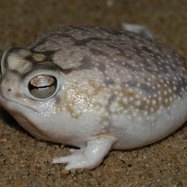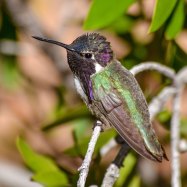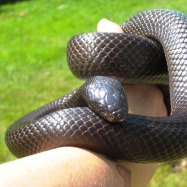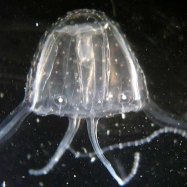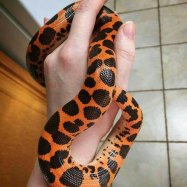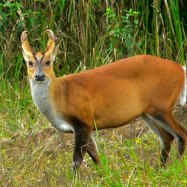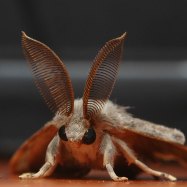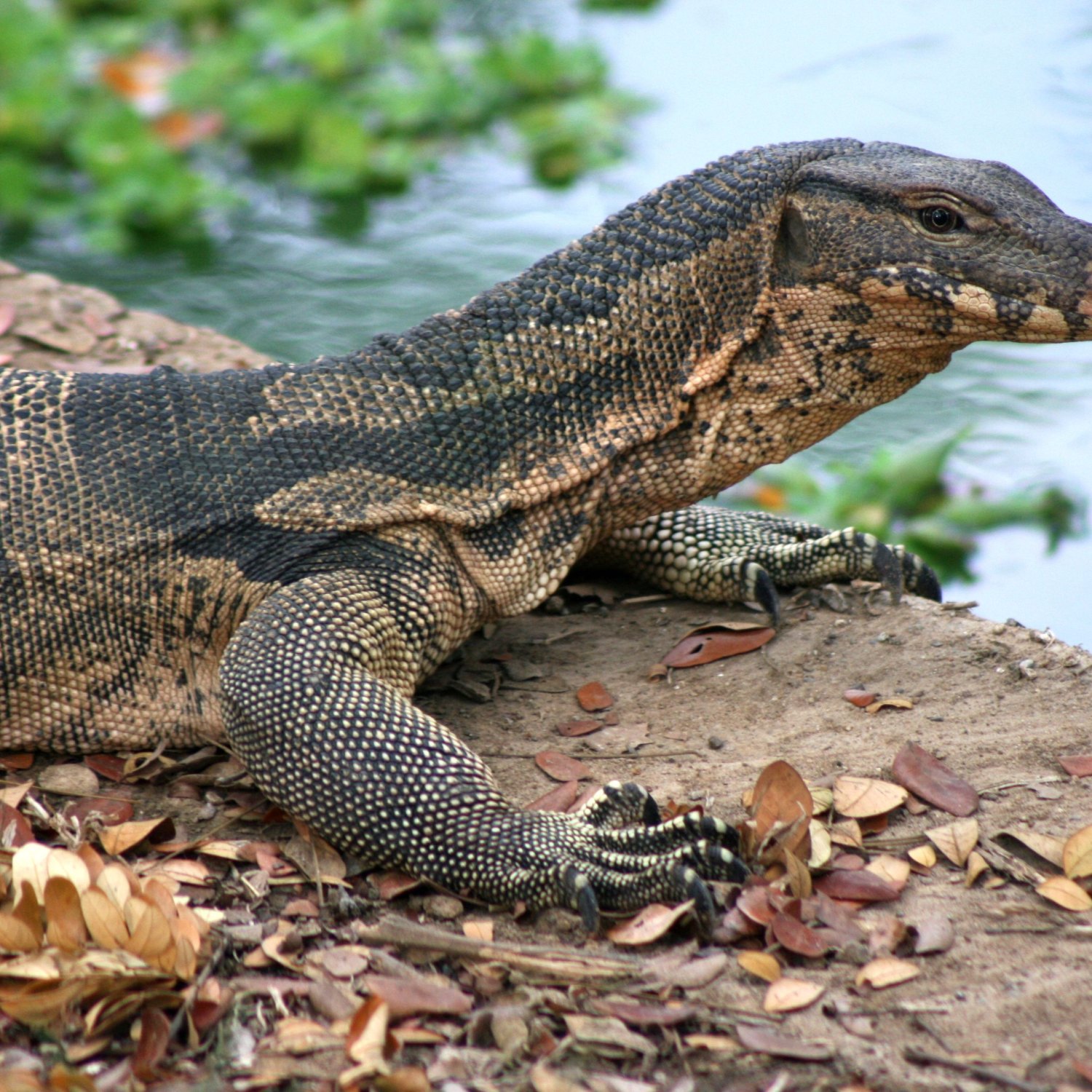
Monitor Lizard
Up to 3 meters (9.8 feet)
The Monitor Lizard is a fascinating reptile found in Africa. With a long and slender body, it can reach up to 3 meters in length. Belonging to the Varanidae family, these lizards are known for their sharp claws and excellent climbing skills. Keep an eye out for these impressive animals on your next African adventure! #MonitorLizard #AfricanWildlife #Reptiles
Animal Details Summary:
Common Name: Monitor Lizard
Kingdom: Animalia
Habitat: Savannahs, grasslands, forests, wetlands
The Magnificent Monitor Lizard of Africa
As you walk through the grasslands of Africa, you may come across a formidable creature lurking in the shadows. With its long, slender body and sharp claws, the Monitor Lizard is a fearsome sight. But don't be intimidated – this reptile is also a fascinating and vital part of the African ecosystem.Scientifically known as Varanus niloticus, the Monitor Lizard is a member of the Animalia kingdom and Chordata phylum Monitor Lizard. It belongs to the Squamata order, which includes other reptiles such as snakes and lizards. Within the Squamata order, the Monitor Lizard belongs to the Varanidae family, which includes around 80 species of monitor lizards found all over the world.
The Monitor Lizard is a common name for these creatures, but they are also known by other names such as goannas, monitor dragons, and water monitors. They can be found in various countries in Africa, making it difficult to pinpoint their country of origin. However, they are widely distributed across the continent, and their habitat includes savannahs, grasslands, forests, and wetlands.
One of the most remarkable features of the Monitor Lizard is its feeding method – they are carnivorous predators. This means that they primarily feed on other animals, and their diet may include insects, birds, rodents, and even snakes. With their powerful jaws and sharp teeth, they are skilled hunters and can even take down larger prey, such as antelopes. Their incredible hunting abilities make them an essential part of the food chain in their habitat Madagascar Jacana.
The African Monitor Lizard species have various colorations, including brown, gray, and green, with yellow or black markings. This color variation depends on the species and their specific habitat. For example, the Savanna Monitor Lizard has a light tan body with dark spots, while the Nile Monitor Lizard has a dark brown body with yellow stripes.
One of the most distinctive features of the Monitor Lizard is its long and slender body. They also have sturdy limbs and powerful claws that help them in their hunting and climbing activities. Their body shape and structure make them excellent climbers, and they can often be seen basking in the sun on tree branches or rocks.
The length of the Monitor Lizard can vary depending on the species, but some can grow up to an astounding 3 meters (9.8 feet)! With their long bodies and equally long tails, these reptiles have a striking appearance that demands attention and respect.
In addition to their impressive size, the Monitor Lizard also has some incredible abilities. They have highly developed sensory organs, such as their keen eyesight and sense of smell, which allow them to locate prey, even from a distance. They also have a forked tongue that helps them to navigate their surroundings and detect potential threats.
Apart from their hunting abilities, Monitor Lizards also have another essential role in their habitat – they are ecosystem engineers. This means that they have a significant impact on their environment and play a crucial role in maintaining the balance of the ecosystem. They help control the population of other animals by feeding on them, and their burrowing activities help improve the soil quality in their habitats.
Furthermore, their burrows provide shelter for other animals, such as snakes and small mammals, during harsh weather conditions. This makes the Monitor Lizard a critical species that contributes to the diversity and stability of their ecosystem.
Unfortunately, like many other reptiles, Monitor Lizards face threats in the form of habitat loss and human activities such as poaching. Their habitat is continuously shrinking due to deforestation and urbanization. They are also hunted for their meat and skin, which is used in traditional medicine and the fashion industry. These threats have led to a decline in their population, making it essential for conservation efforts to protect this species.
Fortunately, there are multiple conservation projects and initiatives dedicated to protecting the Monitor Lizard population in Africa. These efforts focus on raising awareness about the importance of this species and the threats they face. They also work towards preserving their habitat and promoting sustainable practices to reduce human impact on their environment.
As we continue to learn more about the extraordinary abilities and role of the Monitor Lizard in its ecosystem, it's evident that this reptile plays a crucial role in maintaining the balance of nature. It is a species that deserves our admiration and protection, and we must work towards preserving its existence for future generations.
In conclusion, the Monitor Lizard is a magnificent creature that fascinates and captivates us with its appearance and abilities. As we work towards protecting and preserving their population, we must also appreciate their contribution to the African ecosystem. Let us strive to coexist with these reptiles and promote a healthy and sustainable future for all species on our planet.

Monitor Lizard
Animal Details Monitor Lizard - Scientific Name: Varanus niloticus
- Category: Animals M
- Scientific Name: Varanus niloticus
- Common Name: Monitor Lizard
- Kingdom: Animalia
- Phylum: Chordata
- Class: Reptilia
- Order: Squamata
- Family: Varanidae
- Habitat: Savannahs, grasslands, forests, wetlands
- Feeding Method: Carnivorous
- Geographical Distribution: Africa
- Country of Origin: Various countries in Africa
- Location: Africa
- Animal Coloration: Varies depending on the species, but can be brown, gray, or green with yellow or black markings
- Body Shape: Long and slender body with a long tail
- Length: Up to 3 meters (9.8 feet)
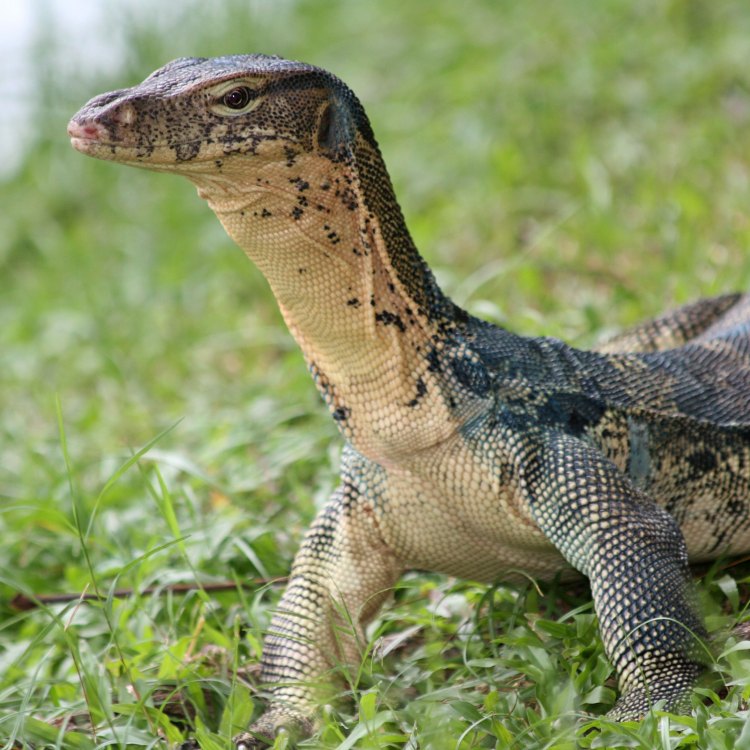
Monitor Lizard
- Adult Size: Up to 3 meters (9.8 feet) in length
- Average Lifespan: 10 to 20 years in the wild
- Reproduction: Oviparous (lays eggs)
- Reproductive Behavior: Mating occurs during the dry season, females lay eggs in burrows or nests
- Sound or Call: Hissing and growling sounds
- Migration Pattern: No specific migration pattern
- Social Groups: Solitary, but may congregate in areas with abundant food
- Behavior: Active during the day, excellent climbers and swimmers
- Threats: Habitat loss, hunting for their meat and skin
- Conservation Status: Varies depending on the species, some are listed as threatened or endangered
- Impact on Ecosystem: Important predators that help control populations of small mammals and reptiles
- Human Use: Hunted for their meat and skins, some species kept as pets
- Distinctive Features: Long body, long tail, large claws, forked tongue
- Interesting Facts: Monitor lizards are the largest lizards in Africa and can reach impressive sizes. They have a strong bite force and sharp teeth. They are skilled swimmers and can dive for several minutes to catch prey underwater. Some species of monitor lizards are known to be venomous. They are highly adaptable and can thrive in various habitats including forests, savannahs, and wetlands.
- Predator: Large birds of prey, crocodiles, other monitor lizards
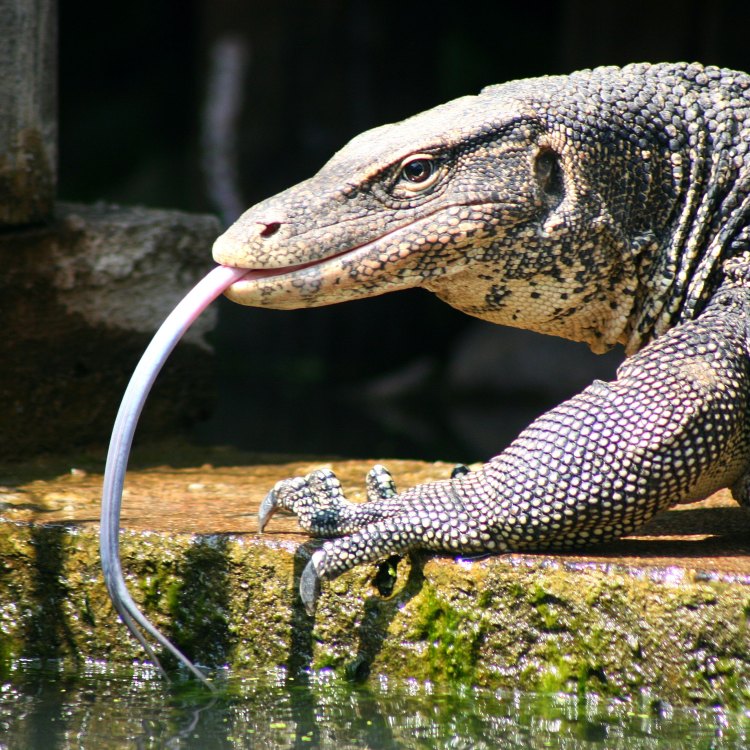
Varanus niloticus
The Mighty Monitor Lizard: Exploring the Fascinating World of these Giant Reptiles
The monitor lizard is an impressive and fascinating creature that can grow up to 3 meters in length, making it one of the largest lizards in the world. With its long body, long tail, and formidable appearance, it has captured the imagination of people for centuries. These reptiles are found all over the world, from Africa to Asia to Australia, and have unique characteristics that make them stand out from other lizards.In this article, we will dive into the world of monitor lizards and discover their intriguing features, behavior, and impact on the ecosystem PeaceOfAnimals.Com. So, buckle up and get ready to learn all about these incredible creatures.
The Basics: Size, Lifespan, and Reproduction
The average size of a monitor lizard can vary depending on the species, but most of them can grow up to 3 meters (9.8 feet) in length. This makes them one of the largest lizards in the world, and it’s no wonder they are often referred to as “dragons”. Of course, the size can also depend on various factors such as habitat, food availability, and genetics.In the wild, monitor lizards have an average lifespan of 10 to 20 years, but some can even live up to 30 years. However, due to human activities such as habitat destruction and hunting, their lifespan is often cut short. We will discuss the threats and conservation status of these reptiles later in the article.
Monitor lizards are oviparous, which means they lay eggs Megatherium. The number of eggs laid can vary depending on the species, but on average, a female can lay anywhere from 7 to 30 eggs. The females construct burrows or nests in the ground to lay their eggs, and the incubation period can last anywhere from 6 to 9 months.
Mating and Reproductive Behavior
Mating in monitor lizards usually occurs during the dry season, which varies depending on the region they inhabit. During this time, males will engage in courtship displays to attract females. These displays can include head-bobbing, tail-wagging, and even wrestling with other males to show dominance.Once a female has been successfully courted, she will lay her eggs and guard them until they hatch. Interestingly, some monitor lizard species have the ability to store sperm for a long time, allowing them to reproduce even without a male present.
Sounds and Communication
Monitor lizards are not known for their vocalizations, but they can produce hissing and growling sounds. These sounds are used as a form of communication, especially during territorial disputes or as a warning to potential predators. Their hisses are also used when feeling threatened or trying to ward off potential threats.However, the primary way monitor lizards communicate is through body language and scents. They use various body postures and movements to communicate with other lizards, and they also have a keen sense of smell that they use to detect prey and potential mates.
Migration Patterns and Social Groups
Unlike many other animals, monitor lizards do not have a specific migration pattern. They are nomadic creatures, constantly on the move in search of food and suitable habitats. However, they do have home ranges that they defend and return to often.Monitor lizards are generally solitary creatures, but they may congregate in areas where there is an abundance of food. However, they will usually avoid each other and only interact during the breeding season.
Behavior: Active, Climbers, and Swimmers
Monitor lizards are active during the day, and they spend most of their time foraging for food. They are opportunistic hunters and will feed on a variety of prey, including insects, birds, rodents, and even other lizards. Their powerful jaws, sharp teeth, and strong bite force make them formidable predators.One of the most impressive abilities of monitor lizards is their climbing and swimming skills. These reptiles are excellent climbers and can easily scale trees and cliffs in search of prey or to escape from predators. They are also skilled swimmers and can dive underwater for several minutes to catch prey or cross bodies of water.
Threats and Conservation Status
Unfortunately, monitor lizards face many threats in the wild, and their populations are declining. Habitat loss due to deforestation and urbanization is one of the biggest threats to these reptiles. With their constant need for a new territory and food sources, the shrinking of their habitats is a significant challenge for their survival.Another threat is hunting for their meat and skin. In some cultures, monitor lizards are considered a delicacy and are hunted for their meat, which is believed to have medicinal properties. Their skin is also highly prized for its use in traditional medicine and fashion industries. This has led to the decline of several monitor lizard species, and some are even listed as threatened or endangered.
Impact on Ecosystem: Important Predators
Monitor lizards play a crucial role in their ecosystems as top predators. They help control populations of small mammals and reptiles, preventing overpopulation and maintaining a balance in the ecosystem. If their populations continue to decline, it could have far-reaching consequences on the delicate balance of their habitats.Human Use and Interaction
Unfortunately, monitor lizards are not only hunted for their meat and skin, but they are also often kept as pets. This is especially true for species like the Komodo dragon, which is a popular attraction in zoos and tourist destinations. However, monitor lizards are not suitable pets as they require specialized care and large enclosures. This has led to many captured lizards suffering from neglect and improper care.Distinctive Features and Interesting Facts
Monitor lizards have several unique features that make them stand out from other lizards. Their long and muscular bodies are built for agility and strength, and their long tails help them balance while climbing and swimming. They also have sharp claws that they use for digging, climbing, and hunting.One of the most interesting facts about monitor lizards is that some species are known to be venomous. The Komodo dragon, for example, has venomous glands in its bite, which can take down large prey. This makes them one of the few venomous lizards in the world.
Monitor lizards are also highly adaptable and can thrive in various habitats, including forests, savannahs, and wetlands. They have even been known to inhabit urban areas, where they can find food and shelter. This adaptability is one of the reasons why they have been able to survive and thrive in many different environments.
Predators of the Monitor Lizard
Like any other animal, monitor lizards also have predators. In the wild, they must constantly be on the lookout for large birds of prey, crocodiles, and other monitor lizards. However, these predators mainly target the young or injured lizards, as adult monitor lizards can be quite formidable and challenging to take down.Conclusion
The monitor lizard is an incredible reptile that has captured our fascination for centuries. From their impressive size to their unique features and abilities, they are truly one of the most fascinating creatures in the animal kingdom. However, their populations are facing numerous threats, and it is our responsibility to protect and conserve these magnificent creatures.As we continue to learn more about the monitor lizard, we must also understand the importance of their role in maintaining a healthy ecosystem. Let us appreciate and admire these giants of the reptile world, and work towards ensuring their survival for generations to come.
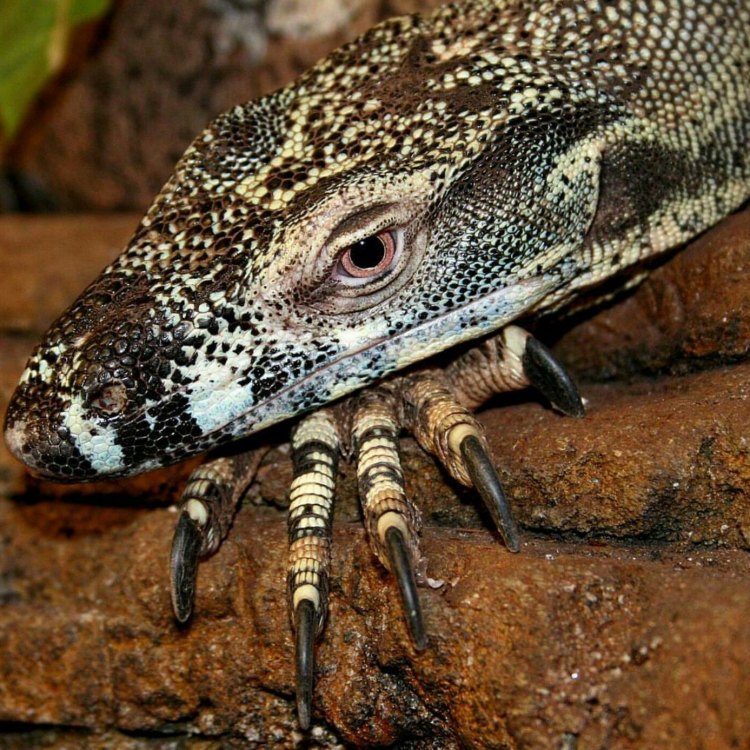
The Magnificent Monitor Lizard of Africa
Disclaimer: The content provided is for informational purposes only. We cannot guarantee the accuracy of the information on this page 100%. All information provided here may change without prior notice.

